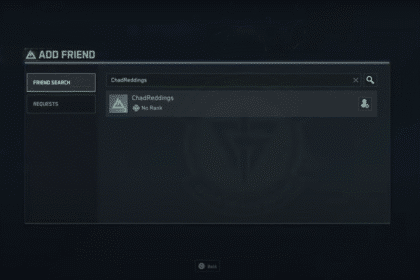With Baldur’s Gate 3 being sold by the hundreds and thousands and with a peak of over 800,000 players on Steam, everybody and their mothers have probably heard of this game. Not to mention all the hype and videos surrounding it, even non DnD players look into a game with interest. Some of them might be wondering how the game works since it’s close to tabletop ruleset of Dungeons and Dragons 5th Edition.
In this guide, we’ll try to show you the basics of the game for those who haven’t played DnD before. There’s a lot of mechanics to cover so we won’t cover all the classes, just the basics to get you started!
Ultimate Beginner’s Guide For Non-DnD Players
When playing through Baldur’s Gate 3 the first step is to do character creation. For some people this can just be a couple of minutes while others take hours. I’m the latter and I need serious help with that but that’s beyond the scope of this guide. We’ll go through the basics as you create your character since it’s a great way of digesting all that information.
Picking a Race
In Dungeons and Dragons there’s a lot of different races you can pick and each one of them are unique. At the start of the character creation, you can choose to make a custom character or an Origin character.
This isn’t really a DnD thing but more of a Larian Studios thing, the developers of the game. You can play as one of the companions in the game, we go through it in more detail on our guide on Origin characters. For this guide we’ll go with a custom one.

Normally in Dungeons and Dragons some races are naturally stronger, more dexterous or more charismatic. This isn’t true in Baldur’s Gate 3 since they’re doing the Custom Lineage optional rule, which basically means instead of every race having a unique set of bonuses, you just get to pick two abilities to have a +2 and a +1. We’ll talk about abilities later on.
So, with all abilities being the same what makes the races stand out? Well, most races still have their features, which can range from naturally having magic to seeing in the dark. Most races have Darkvision, which makes them see better at the dark, while others don’t like Humans or Halflings.
If you want to see the other races in more details, we go through all of them in our guide on the different races so go check that one out!
Racial Features

There are also some other interesting features, and you can see all of them by just hovering over their icons. Some of these features are basic like taking only half fire damage from Tieflings to getting a free reroll as halflings because they’re all so lucky! We’ll talk about rolls later on as well.
The things that race effects are stuck to their features and their story in the setting of Baldur’s Gate 3. Tieflings are generally not trusted since they have demon blood in them, also the horns and demon tails have something to do with that as well. While if you pick a Human, you’re basically no one special because they’re the most common population-wise in the world.
Pick the race that you like the looks of or what you like to Roleplay as. Dungeons and Dragons is a Roleplaying Game, which are two things, roleplaying and a game. If you want more of a game, then pick the race that has the best features for your playstyle. No one’s stopping you from power gaming or making an Elf that looks like Legolas #4,772.
Picking a Class
Classes have their own different features, abilities and things to keep track off. We won’t go in detail with all of them since that will make this article into a book and we don’t want that. If you want to see how the classes work in more detail go check our guide on all the classes for more information.
Classes are divided into 3 categories: Martials, Hybrids and Casters. Martials are the ones that hit things with sticks, Casters are ones that hit things with magic sticks, and Hybrids can do both. If you want spells go with Casters, if you want to chop things with a greatsword or punch things go with Martials. Hybrids are for those who want to experience both.

If you’re afraid of complexity and want some beginner friendly classes, then here are my suggestions. If you want an easy-to-understand Martial class, go with a Fighter, for Casters go with a Sorcerer and with Hybrids go for either a Paladin or a Ranger.
Class Features
Each class has their own Proficiencies, from weapons to armors and skills. Clerics can wear armor, use maces and can be good at medicine or religion. Wizards can’t wear armor, can’t swing swords but instead uses staves, and can be good with Arcana or History. Both of them can cast magic and while the Cleric can be great as a frontline fighter as well, for advanced players a wizard can be one too.

My suggestion is to pick the class that looks cool for you. If you want to do number crunching and be the most powerful, then go research on it. Each class excels in different fields, fighters and barbarians are great in combat but not so much outside. Bards have a lot of skills that can affect conversations and wizards and druids can have some great spells for utility.
Each class also has their main abilities, like Wizards using Intelligence for their spells and Paladins and Bards using Charisma for theirs. Fighters and Barbarians would want to have more Strength and Constitution while Druids and Clerics would want to have more Wisdom. We’ll talk about Abilities next.
Distributing Abilities
This is one of the more important parts of setting up your character. Mainly because if you mess it up, you’ll have a horrible game experience, especially in battles. For absolute beginners to RPGs, I highly suggest you just press the “Use Recommended” button for your first run. It’ll allocate points to the abilities that you need for your class.

For those who want to know which abilities are good to have for each class here’s a neat little list:
- Barbarian — Strength and Constitution
- Bard — Dexterity and Charisma
- Cleric — Wisdom and Charisma
- Druid — Wisdom and Intelligence
- Fighter — Strength and Constitution
- Monk — Strength and Dexterity
- Paladin — Charisma and Wisdom
- Ranger — Dexterity and Strength
- Rogue — Dexterity and Intelligence
- Sorcerer — Charisma and Constitution
- Warlock — Charisma and Wisdom
- Wizard — Intelligence and Wisdom
This is also the tab where you can get Skill Proficiencies, which are mostly used outside of combat. There are some that are used inside combat though like Athletics for pushing enemies off cliffs or Acrobatics to not fall face first when you jump down a ledge.
Skills are affected by abilities, like Stealth and Acrobatics are affected by Dexterity and Charisma effecting Persuasion and Intimidation. If you have higher Dexterity, you naturally have better Stealth, being proficient at Stealth just adds more bonuses.
Dice Roll Mechanics
Now that you’ve created a character you can jump into the game. If you’ve forgotten already the game is based on the Dungeons and Dragons 5th Edition Rule set with some changes. The basics are still there though, which means a lot of things are dice rolls.
From picking a lock to persuading someone not to stab you to stabbing someone it’s all about dice rolls. Of course, most of them are automated and you don’t even notice it, there are some things you should remember though.

Having Advantage or Disadvantage just means you roll twice and pick the highest or lowest outcome respectively. So, if you see “Advantage” on something that means you have a higher chance of doing that thing, same with Disadvantage meaning you have lower chances.
Remember that if you roll a 20 that’s called a “Natural 20” and that means you automatically succeed a skill check. If that happens in combat with an attack roll then you do a Critical Hit which means you deal even more damage!
If you roll a 1 that’s called a “Natural 1” and pray that you never get these. That means you automatically fail the roll despite all your bonuses. In combat that’s a critical miss, so even if your bonuses plus a 1 will let you hit it, you’ll still miss!
Difficulty Classes And Bonuses
Dice rolls aren’t just in combat but outside of it too. Sometimes in conversations you get these choices based on your skill like Deception or Sleight of Hand. When this happens, a dice rolling screen will appear, this will show all your bonuses at the bottom of the dice. Below the bonuses are other bonuses like the spell Guidance which can add to your rolls. Stack as much as possible to increase the odds.

At the top is the “Difficulty Class” a number you need to roll equal or above to succeed. If you roll lower you fail, but certain things luck a Halfling’s Lucky or Inspiration can give you limited rerolls. Also remember that disadvantages and advantages can also happen here with two dice being rolled.
For now, that’s all the basics you’ll want to know about Baldur’s Gate 3 and the DnD mechanics in it. Hopefully this helps you out! So go out there and try to enjoy the game!
ALSO READ: Baldur’s Gate 3: New Monk Class Overview













